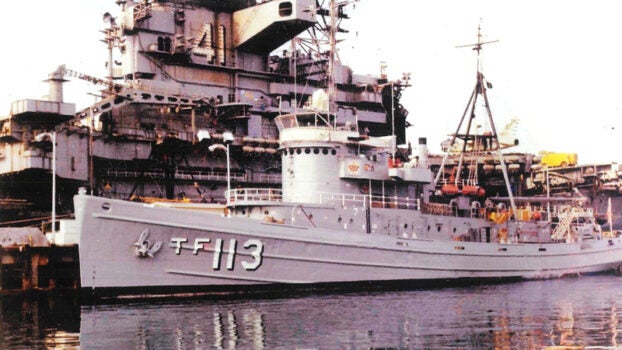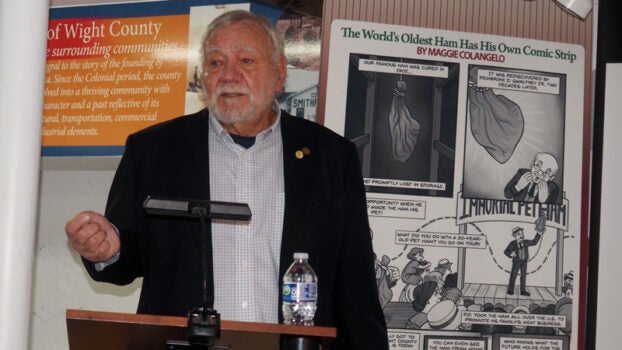Remembering Vietnam: Smithfield Navy veteran recalls wartime service
Published 7:52 pm Tuesday, April 2, 2024
It’s been 56 years since Chris Torre found himself face to face with a Soviet trawler off the coast of Vietnam.
“I can remember it like it was yesterday,” Torre, a Smithfield resident, told a gathering of fellow veterans and others at the Isle of Wight County Museum on March 29.
The date, which a congressional act designated as National Vietnam War Veterans Day in 2017, marks the day in 1973 when the U.S. Military Assistance Command in Vietnam was disbanded and the last American combat troops departed the southeast Asian country.
Torre joined the Navy Reserves voluntarily in Santa Barbara, California, in 1966 on advice from his college fraternity brothers, and found himself called up for active duty a year later, on March 10, 1967. That same year, he was assigned to the USS Takelma, a 205-foot-long oceangoing fleet salvage tugboat.
The Takelma, named for a Native American tribe indigenous to Oregon’s Rogue Valley, was built in 1943 and already in rough shape by the time Torre reported aboard. It was armed primarily with a 3-inch, 50-caliber cannon that Torre recalls couldn’t turn all the way to the right.
He’d been officially assigned as a yeoman or secretary to the ship’s officers but found himself overseeing the radar crew when the Takelma’s head radar operator was transferred off and never replaced.
“I was trying to teach three kids how to operate the machine and use the slide rules,” Torre said.
Though he managed to avoid a firefight during his time at sea, he remembers well the sight and sounds of nonstop helicopter traffic between the shoreline and a nearby hospital ship.’
“Pretty much all night long there was machine gun fire,” Torre said.
He then recounted for the crowd the day he and his 65-member crew received their orders while gathered on the ship’s mess deck.
Their captain – a lieutenant by rank – told them former Soviet Premier Nikita Kruschev had outfitted several Russian trawlers with jamming equipment that was wreaking havoc with radio communications between American aircraft carriers and their pilots in the air. The Takelma’s mission was to follow one of these trawlers and at all times position themselves between it and any carrier.
Nearly five hours after departing with equipment to counter the Russian jamming devices, the Takelma’s crew got their first look at their quarry.
“The first time you see that hammer and sickle, that red flag, that was really something,” Torre said.
Torre described his first captain as “a nervous type” and “strict disciplinarian” who’d received his commission after rising through the enlisted ranks.
“He was scared to death that somebody was going to make a mistake,” Torre said.
Sure enough, the Russian trawler, which had two propellers to the Takelma’s one and as such was more maneuverable, made a sudden turn one day, forcing the ship to take half a mile to match his course. By that time, it was too late.
After a monthlong interlude, during which the ship and its crew were reassigned to retrieve Air Force drones that would fall into the water, Torre found himself back on assignment pursuing Russian trawlers, this time with a new captain – Lt. Bobby Frost – who Torre remembers as more popular with the crew.
This time, when the Takelma came upon the Russian trawler, Frost ordered Torre to, rather than focus on the trawler, keep track of the nearest aircraft carrier. When the trawler made one of its sudden turns, Frost had the Takelma make a bee-line for the nearest carrier and the ship was able to reach it minutes before the Russians could.
“There was no doubt among anyone in the crew that had the Russian not turned his ship away when he did we’d have had a bad collision,” Torre told The Smithfield Times. “Lt. Frost was not going to move out of the way.”









